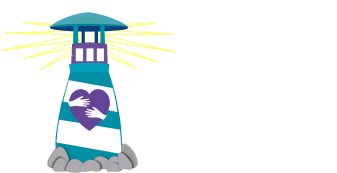School resources
Idaho School Response Guidelines for Suicide and Sudden Death
Suicide Crisis response and
postvention is critical as it:
- Maintains student and staff safety
- Provides support to grieving and/or traumatized victims
- Screens and/or refers and follows-up with those who may need more support.
- Reduces the likelihood of contagion for suicide, other self-harm and violent crises
IDAPA 08.02.03.160 states that “the State Board of Education rule requires that each school district adopt, and review annually, a comprehensive district-wide policy and procedure encompassing…7. Suicide Prevention…” among others. The following information is derived from best practices in school suicide prevention including, “After a Suicide: A Toolkit for Schools.” Suicide Prevention Resource Center and the American Foundation for Suicide Prevention, 2011; “Sudden Death – Suicide – Critical Incident: Crisis Response Procedures For Principals and Student Services Staff, Madison Metropolitan School District, August 2005; Maine Youth Suicide Prevention: Youth Suicide Prevention, Intervention & Postvention Guidelines, The Maine Youth Suicide Prevention Program, 2006; and the Schools and Suicide Work Group, a sub-committee of the Idaho Council on Suicide Prevention.

Responsibilities of school principal or designee
- Verify the death with law enforcement, coroner’s office, hospital, or family of the deceased. IMPORTANT: the death may be labeled a suicide ONLY AFTER it has been officially determined by the coroner. This determination may take weeks.
- Convene Crisis Response Team immediately.
- Contact the family of the deceased to express condolences, offer support, ask what students should be told and inquire about funeral arrangements.
Inform 1) your school district office, 2) The State Department of Education at 208-332-6960, and 3) administrators of schools where siblings are enrolled.
- Notify staff – If news of the death is received prior to the start of the school day, ensure all staff have been contacted via phone tree prior to start of school about the death and how the school response will proceed. Plan a staff planning session before the school day. If news is received during the school day, see Crisis Response Team procedures for proper handling of staff notification.
- Schedule time and place for after school de-briefing for school personnel to provide emotional support and review next steps.
- Act as media spokesperson. Direct all staff to refer all media requests to principal or designee. Prompt response to the media is critical to help mitigate against rumors. When speaking with media, focus on the positive steps of the school’s postvention plan to help students through the immediate crisis. Offer warning signs (if coroner has ruled a suicide or confirmed that the death is being investigated as such) and resources where parents and student can get help. See Sample Media Statements.
- Ensure school secretary is prepared to deal with calls concerning the death.
- Provide information about the death and funeral arrangements to parents of other students when the information becomes available. Include information about suicide warning signs (if coroner has ruled a suicide or confirmed that the death is being investigated as such), support services available to students at school and other community resources. See Sample Letter.
Regional School Suicide Postvention (RSSP) Teams are available to assist you with this response and will be activated by the State Department of Education Safe and Drug Free Schools Office when requested. Call 208-332-6960.
DO NOT REFER TO THE DEATH AS A SUICIDE unless 1) the coroner has made the official certification and 2) the family of the deceased does not object. Otherwise, refer to it as a sudden death. If the family objects, it may be helpful to have someone from school administration or counseling who has a good relationship with the family to contact them and explain that students are already talking amongst themselves and that talking with the students about suicide can help keep students safe. If they still object, schools can state, “The family has requested that information about the cause of death not be shared at this time.” The school may then go on with suicide postvention activities without referring to this particular death as a suicide.
DO NOT CLOSE THE SCHOOL. For safety purposes, permit students to leave school early only with parental permission and documentation. Implement an enhanced system of tracking student attendance. Follow regular school routines to the extent possible.
DO NOT ANNOUNCE NEWS OF THE DEATH OVER THE LOUD SPEAKER OR IN A SCHOOL ASSEMBLY. See Crisis Response Team procedures for proper handling of student notification.
DO NOT EMPTY THE DECEASED STUDENT’S LOCKER OR GATHER PERSONAL EFFECTS WITHOUT FIRST CONTACTING THE FAMILY. The family of the deceased may prefer to do this in privacy or to have school personnel do it for them. Provide quiet time and support to meet their wishes.

Responsibilities of school crisis response team
The school Crisis Response Team manages the emotional fallout within the school community to
decrease the potential for contagion (copycat behavior). The team will likely meet several times during the first day.
- Contact law enforcement to verify the facts of the case if not already obtained in the call by the principal.
- Implement counseling support plan, which should include:
- Assess what resources are needed. Consider requesting resources from neighboring school districts and contacting clergy if appropriate.
- Clarify responsibilities for support of school personnel, students and parents with regard to grief counseling, debriefing, etc.
- Designate rooms and personnel for students in crisis. Do not allow bereaved students to congregate in halls or allow large groups in the designated rooms.
- Coordinate with district or community mental health services for additional resources.
- Implement communication plan, which should include:
- Write or review existing scripts for: secretaries, staff announcement, student announcement, and parent letter. Scripts should be honest and direct. See Sample Announcements.
- Notify staff – If news of the event happens prior to the start of the school day, conduct a staff planning session. See Guidelines for Staff Session. If news of the event happens during the school day, or if phone tree notification was not implemented before the start of school, assign team members to first notify staff who taught the deceased student or other staff who might have had extensive contact. The team member should be accompanied by another adult in case the staff member is unable to continue his/her duties. Substitutes may be needed.
- Notify closest friends of deceased if known – Individually notify those students who may be particularly at risk. Student services staff provides support now and ongoing. Encourage students to call parents for support. Keep in mind that the family of the deceased may have the best information about which students were friends and might be at risk.
- Notify all staff and students – Read announcement from a written message, class by class. Notify as many classes simultaneously as possible (as resources allow). Provide special support in classes of the deceased student, or for any teacher or student needing assistance. Pay close attention to students who attempted suicide, or have previously experienced loss by suicide or another recent loss. See Identifying At-Risk Students.
- Ensure notification of other schools where there are siblings or others who may be affected including schools where the deceased student was engaged in extracurricular activities.
- DO NOT REFER TO THE DEATH AS A SUICIDE unless 1) the coroner has made the official determination and 2) the family of the deceased does not object. Always stick to the known facts of the case only.
- If the coroner has not officially determined the death to be a suicide, refer to the event as a sudden death. See guidelines for actions when the family objects under the DO NOT section for the school principal above.
- SQUELCH RUMORS – Rumors create more anxiety and trauma. If the coroner has not yet ruled and there are students or anyone sharing undocumented information, take them aside and explain that it would be better and safer to share only what is known to be documented fact.
- If the coroner HAS ruled it a suicide but the family objects to that label or does not want it used in the announcement, a good compromise is to honor the family’s wishes for the announcements (use “sudden death”), but if asked by students say that it was ruled a suicide by the coroner.
- DO EXERCISE DISCRETION regarding the kind of information shared.
- DO NOT USE EXCESSIVE DETAIL, e.g., discussion of method of death
- DO NOT GLORIFY OR VILIFY THE SUICIDE VICTIM
- DO NOT CONDUCT PREVENTION TRAINING for students following a suicide, such as
- Assign staff member to follow the deceased student’s schedule to observe reactions and comments of students and follow-up as necessary.
- Identify, monitor and assist students who are considered at risk for suicide. Follow-up with these individuals and their families should continue for as long as necessary. All school staff should be especially sensitive to students who are particularly affected by the death such as the deceased’s close friends and peer groups, teams, clubs, etc. of which they were members including those at other schools. These students will need to talk about their reactions. Attention to these students may help prevent future suicidal behavior. Keep in mind that in small schools, this may mean every student. See Identifying At-Risk Students.
- Consider and provide accommodations for reintegration of the deceased student’s siblings. Ensure that this is addressed if siblings attend a different school.
- Conduct daily debriefing with faculty and staff during the crisis and postvention periods.
- Document activities as dictated by school protocols. Documentation is important as each crisis presents an opportunity to improve the process for handling the next crisis.
DO NOT ALLOW INAPPROPRIATE MEMORIAL ACTIVITIES – Avoid any activities that glorify, glamorize or sensationalize the death. “A delicate balance must be struck that creates opportunities for the student to grieve but that does not increase suicide risk for other school students…” (Suicide Prevention Resource Center, 2004) Please note: Memorials should be the same for any student death regardless of cause. Administration should therefore carefully consider the establishment of any permanent marker for any student death. School staff are advised to make assertive, proactive efforts to guide students in the direction of safe activities for grieving and honoring the student who died.
Guidelines for navigating the aftermath
AVOID that which other vulnerable youth may see as a way to receive recognition for considering
suicide. DO NOT ALLOW:
- Memorial Services Within The School Building
- Sending All Students To The Funeral Or Cancelling Classes For The Funeral
- Flying The Flag At Half-Mast
- Large Student Assemblies About The Victim Or A Moment Of Silence At Assemblies
- Dedication Of Sports Events Or Other Events
- Permanent Markers Or Memorials Of Any Kind, E.G. At The Student’s Locker, Plaques, Trees, Benches, Retirement Of A Sports Jersey, Shrines Of Any Kind, Etc.

ALLOW that which honors the student who died and can help the living. ALLOW:
- Donations collected for the bereaved family, charities, suicide prevention efforts or youth support programs
- Positive notes or memories written by those students and staff who wish, to be given to the family
- Dedication pages in school newspapers or yearbooks that treat the dedication equally with that of any other. Common guidelines suggest a photograph, name, birth and death dates and something about what they did while living.
DO assign an appropriate school official to monitor social media related to the deceased student such as MySpace, Facebook and Twitter pages. In some cases, the site many need to be taken down.
DO remember self-care during this process! Be aware of your own emotional response to these events and take care of yourself. See Self Care.
These guidelines are meant as a basic list of critical functions for school postvention.
For immediate or ongoing questions or concerns contact the State Department of Education at 208-332-6960. If you feel any student or staff posses an immediate threat to themselves or another, contact your local Department of Health and Welfare office.
For more information on school-related suicide prevention, intervention and postvention go to www.sprc.org.
Quick links
More on School Suicide, Prevention, and Intervention
Help bring resources, hope, and support to those
affected by suicide
donating and getting involved
If you are interested in volunteering with us on a regular basis, please fill out the form. You may also join us at our monthly community meetings which are held the first Thursday of each month. See our events page for more information.
Get Involved
Donate
Get Involved
Donate
Support Community Suicide Prevention Through A Donation


